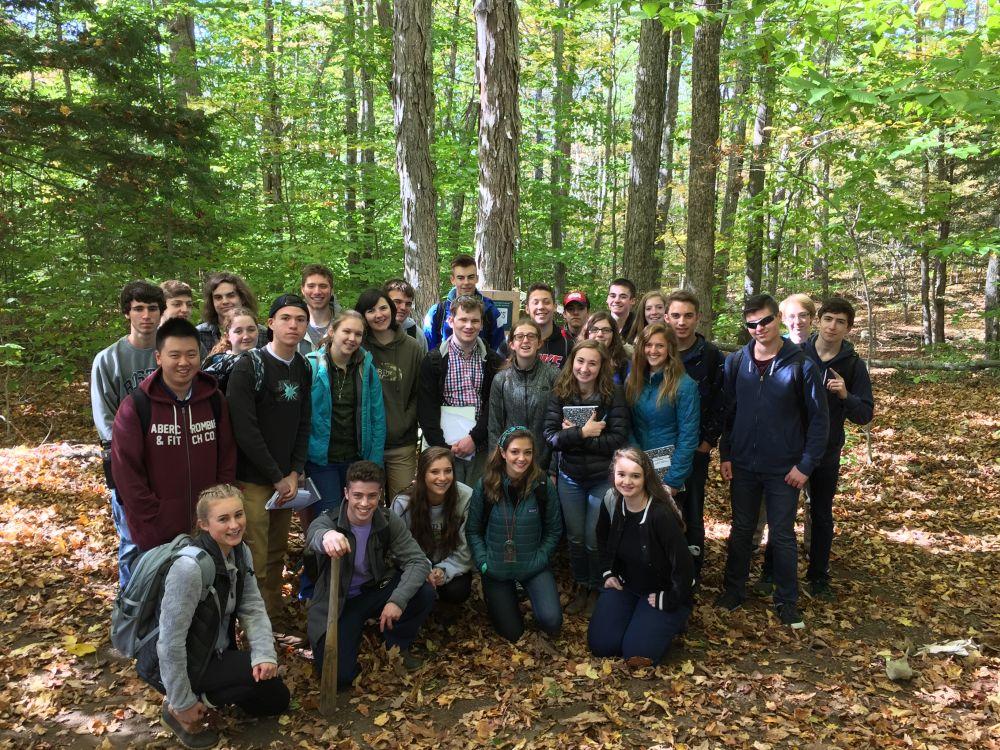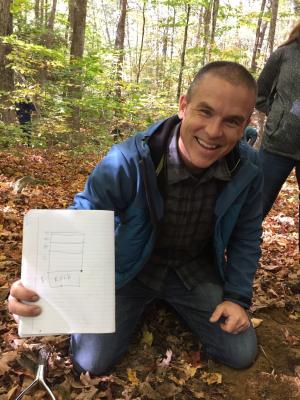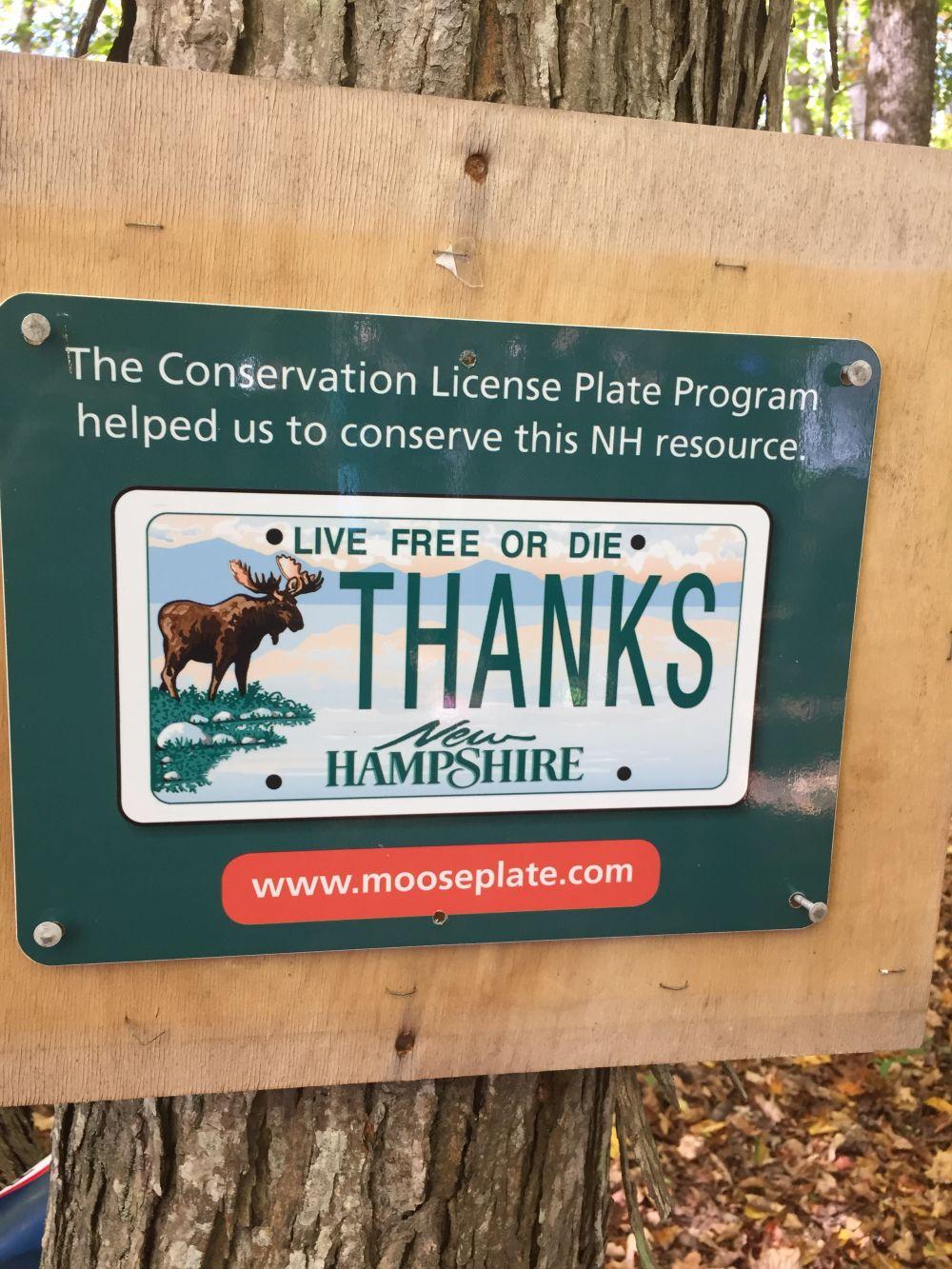Local students reap the benefits of homegrown land conservation
- Tags:
- Education,
- Powder Major's Forest

ORHS students gather for a group photo at Powder Major Farm.
Photo Dave Anderson.
Traditionally, dividends cited by land trusts working to conserve tracts of open space are quantified in ecological terms: protecting the ecology of forests, water quality and habitats for native wildlife. Economic values of conserving forests include clean air, clean community drinking water supplies and opportunities for sustainable forest management to yield wood products and revenue to pay property taxes. Well-managed forestland can often pay for ownership costs.
With a shift in focus to the “people side” of the conservation ledger, the social benefits include recreation access – places to hike or walk dogs. Scenic beauty, quality of life, serenity and spiritual renewal are less tangible values. Many NH communities wrangle with a Master Plan goal to “retain rural character” – those remaining undeveloped farms, forests, mountains; clean rivers and lakes and open space. Land conservation advocates appeal to our New Hampshire sense of place.
If that were not enough, communities also benefit from local conservation land when their students use the land for learning, perhaps its highest and best use.
Students Take Action
Last year, students in the Oyster River High School Sustainability Club helped the Forest Society to permanently protect the new “Powder Major Forest” located along the Oyster River in Madbury, Durham and Lee. The conservation price tag was $2.2 million for 193 sprawling acres now permanently owned by the Forest Society and for the purchase of a conservation easement on the adjacent private 33-acre Powder Major Farm. The Town of Madbury donated a second conservation easement on its adjacent 60 acres for a grand total of 286 acres permanently conserved.
Students in the club raised awareness and funds during community events held at the property: a pie auction and a hugely successful spaghetti dinner with music and raffle prizes as students prepared the meal, served guests and cleaned-up while donating all proceeds to the protection of Powder Major Forest.
It worked. That commitment to public relations and fundraising inspired more generosity from donors and public agencies integral to the success of the fundraising campaign. Students rolled up their sleeves, donned aprons, enlisted friends and families and hosted events designed to protect a significant tract of forestland in their community.

A Full Circle Kind of Day
Now students from Oyster River are shaping the future of Powder Major Forest as an environmental science laboratory, an outdoor classroom. Oyster River High School science teacher Jon Bromley, said “it felt like a full circle kind of day” when his biology students and students in Kara Sullivan’s “Literature and the Land” classes enjoyed an outdoor classroom experience at Powder Major Forest.
Kara Sullivan offered: “It’s essential that students engage with the natural environment while they are reading about the land and writing about their own experiences within it. Students focus on a land site and observe changes in that site over time so their own understanding of the land is imperative to their growing engagement with the land. The ‘Literature and the Land’ course is built around our connection to the environment and specifically our land use philosophy.”
Oyster River High School already has an on-campus tract of forestland – the “Oyster River Natural Area” where students set up study plots to count and measure trees, inventory vegetation, look for invasive species and collect soil samples.
At nearby Powder Major Forest, student teams set-up temporary 15 x 15 meter plots to count and measure the diameter and circumference of trees and record the presence or absence of invasive plants. Students obtain soil samples from the corners of each plot. Mr. Bromley dugs temporary soil pits to reveal the layers of soil “horizons” which contrast in color and texture.

While working to investigate the trees and soil, students better understand the influences of a long human history of agriculture and the role of soils in shaping forest composition. While hiking the trails at Powder Major, students visited several distinct forest communities and made journal entries - looking for similarities and differences with the on-campus natural area back at Oyster River High School.
Jon Bromley reflects on the student experience thus far:
“As I’ve worked with students to study forests in a scientific sense, I feel the kids are starting to develop a greater land ethic. That ethic helps them understand their place in nature and how their actions affect - and are affected - by nature.”
For Bromley, getting students outside to collect data and make observations helps them become more connected to the land. “By doing science in the woods, it helps kids slow down to really see what’s in front of them so that they can enjoy the beauty and meaning of nature. So while I tend to start with science - always trying to quantify something – I think that draws out of students a sense of meaning that wouldn’t have been there if we hadn’t started with the science. Using real places like Oyster River Natural Area and the Powder Major Forest provides context for learning science but also for developing a land ethic and a sense of stewardship and belonging.”

The Forest Society is working to protect and manage our forest reservations and seek partnerships with local schools - particularly in southern NH communities where students may have less familiarity with natural resources. Partnering with local schools creates student learning opportunities on conservation land. We’re creating new outdoor classroom pilot programs at Mt. Major in Alton and at the Powder Major Forest in Madbury, Durham and Lee.
